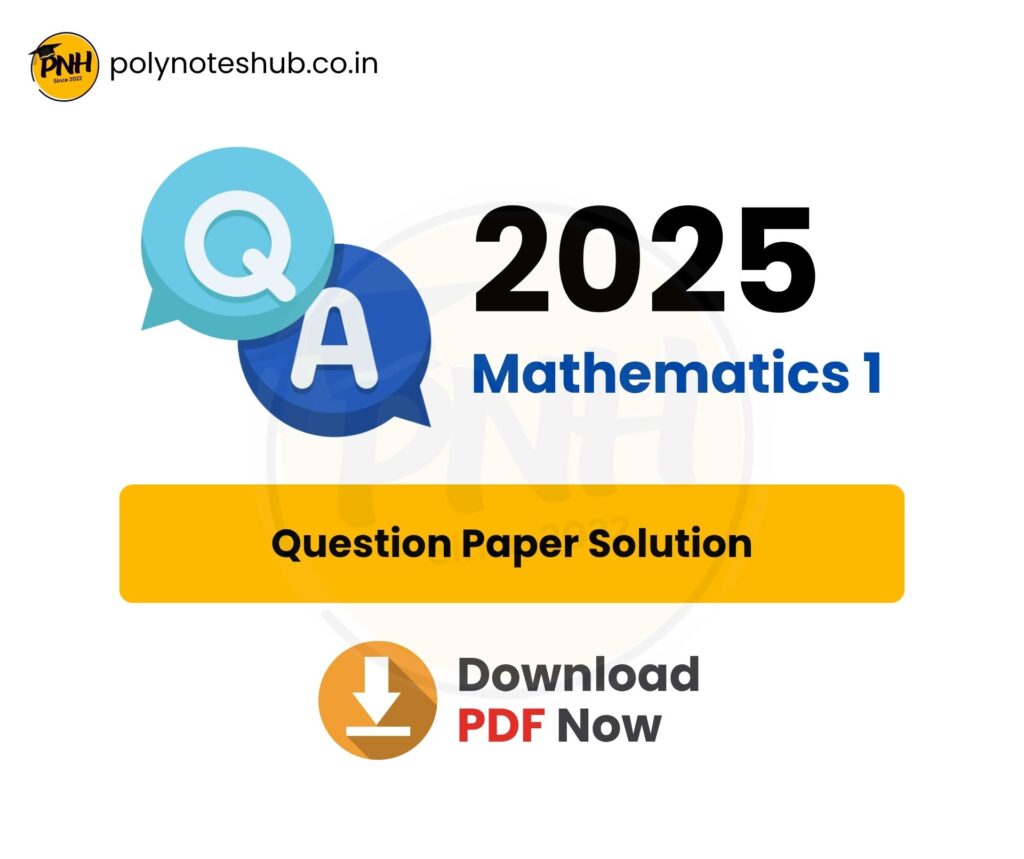In this note, we have listed Units and Measurements Questions and Answers which is one of the chapter of Applied Physics 1. Welcome to Poly Notes Hub, a leading destination for engineering notes.
Author Name: Arun Paul.
Units and Measurements Questions and Answers PDF for Polytechnic or Diploma Engineering Students of Applied Chemistry Syllabus of 1st Sem / 1st Year
Here we have listed units and measurements chapter questions and answers which are will be helpful of diploma engineering or polytechnic engineering, and class 11 students as well.
1. What is a physical quantity?
A physical quantity is a property of a system that can be measured and expressed in numbers along with a unit.
Examples: Length, mass, time.
2. What are fundamental quantities?
Fundamental quantities are basic physical quantities that are independent of others.
Examples: Length, mass, time, temperature.
3. What are derived quantities?
Derived quantities are obtained from fundamental quantities. Example:
- Velocity = distance/time
- Force = mass × acceleration.
4. What is a unit?
A unit is a standard reference used to measure a physical quantity.
5. Name the two common systems of units.
- CGS system (Centimetre–Gram–Second)
- SI system (International System of Units)
6. Define dimensional formula.
Dimensional formula expresses a physical quantity in terms of fundamental quantities.
Example:
Force = M¹ L¹ T⁻²
7. State the principle of homogeneity of dimensions.
In a correct physical equation, the dimensions of LHS must be equal to the dimensions of RHS.
8. Give one application of dimensional analysis.
- To check the correctness of an equation
- To convert units
- To derive relations between physical quantities
9. Give one limitation of dimensional analysis.
Dimensional analysis cannot determine:
- The numerical constant
- Whether a physical quantity is vector or scalar
10. Define least count.
Least count is the smallest value that a measuring instrument can measure accurately.
11. Give one example of direct measurement.
Measuring length using a meter scale.
12. Give one example of indirect measurement.
Measuring distance of an object using echo method.
13. What are systematic errors?
Errors that occur regularly and can be corrected.
Example: Zero error in a vernier caliper.
14. What are random errors?
Errors that occur unpredictably due to unknown reasons.
Example: Fluctuation in readings due to human reaction time.
15. Define absolute error.
Absolute error = | True value – Measured value |
16. Define relative error.
Relative error = (Absolute error / True value)
17. What are significant figures?
Meaningful digits of a number that show accuracy of measurement.
18. What is error propagation?
The process by which errors in measured quantities combine and affect the final result.
19. Give the SI units of:
- Force → Newton (N)
- Energy → Joule (J)
- Power → Watt (W)
20. Write the dimensional formula of energy.
Energy = M¹ L² T⁻²
21. Write the dimensional formula of pressure.
Pressure = M¹ L⁻¹ T⁻²
22. Write the dimensional formula of velocity.
Velocity = M⁰ L¹ T⁻¹
23. Write the dimensional formula of density.
Density = M¹ L⁻³ T⁰
24. What is the SI unit of work?
Joule.
25. Give one example of a dimensionless quantity.
Refractive index.
26. How many fundamental quantities are in the SI system?
Seven.
27. Name the instrument used to measure the internal diameter of a tube.
Vernier caliper.
28. What is zero error?
The error when the measuring instrument does not read zero in the resting state.
29. Define precision.
Precision is the degree of closeness of repeated measurements.
30. Define accuracy.
Accuracy is how close a measured value is to the true value.
31. Find the dimension of momentum.
Momentum = mass × velocity
= M¹ L¹ T⁻¹
32. Convert 5 m/s to cm/s using dimensional method.
1 m = 100 cm → 5 m/s = 500 cm/s.
33. A length is measured as 10 cm, true value is 10.2 cm. Find absolute error.
Absolute error = |10 – 10.2| = 0.2 cm.
34. Using the above, calculate the relative error.
Relative error = 0.2 / 10.2 = 0.0196.
35. Find the least count of a vernier caliper with MSD = 1 mm and 10 VSD = 9 mm.
1 VSD = 0.9 mm
LC = MSD – VSD = 1 – 0.9 = 0.1 mm.
36. Difference between systematic error and random error
| Systematic Error | Random Error |
|---|---|
| Occurs in the same direction every time. | Occurs irregularly and without any fixed pattern. |
| Has a definite cause. | Has no specific cause; arises due to unpredictable variations. |
| Can be detected and corrected. | Cannot be completely eliminated. |
| Affects accuracy of measurement. | Affects precision of measurement. |
| Example: Zero error in a vernier caliper. | Example: Fluctuation in stopwatch reading due to human reaction time. |
37. Define least count
Least count is the smallest value that a measuring instrument can measure accurately.
Example: Least count of a meter scale = 1 mm.
38. State the principle of homogeneity of dimensions
According to the principle of homogeneity,
In a physically meaningful equation, the dimensions of all terms on the left-hand side (LHS) must be equal to the dimensions of all terms on the right-hand side (RHS).


